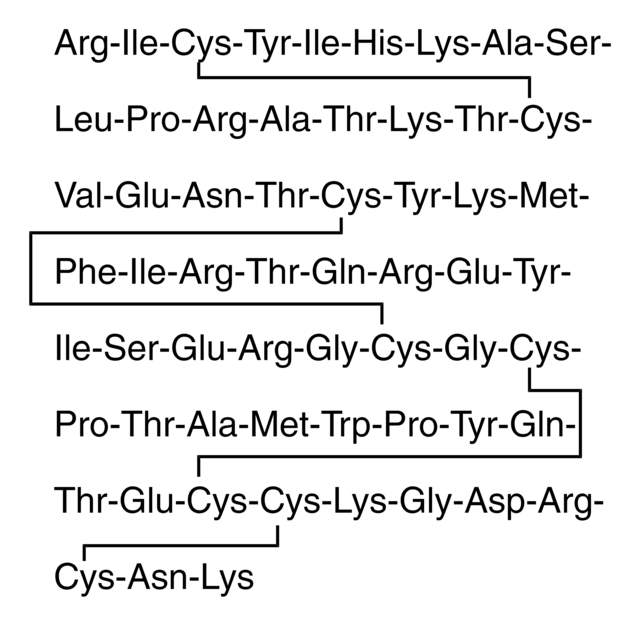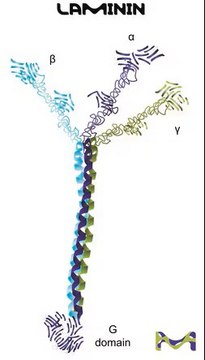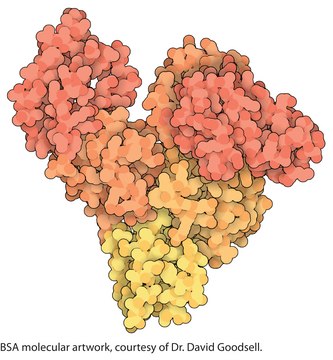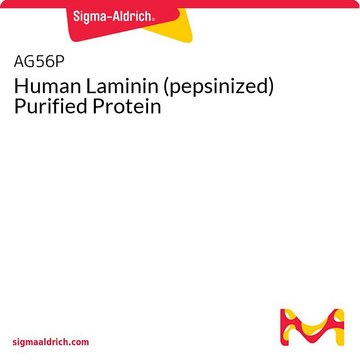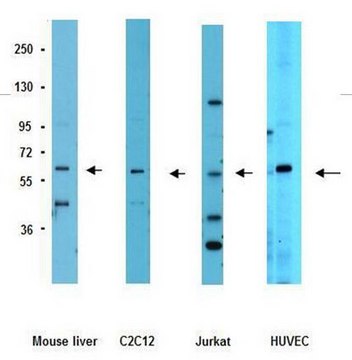C0728
Anti-m-Calpain (Domain III), Large Subunit antibody produced in rabbit
~1 mg/mL, affinity isolated antibody, buffered aqueous glycerol solution
Sign Into View Organizational & Contract Pricing
All Photos(1)
About This Item
MDL number:
UNSPSC Code:
12352203
Recommended Products
biological source
rabbit
Quality Level
conjugate
unconjugated
antibody form
affinity isolated antibody
antibody product type
primary antibodies
clone
polyclonal
form
buffered aqueous glycerol solution
species reactivity
rat, mouse, human
concentration
~1 mg/mL
technique(s)
western blot: 1:1,000
UniProt accession no.
shipped in
wet ice
storage temp.
−20°C
Gene Information
human ... CAPN3(825)
mouse ... Capn3(12335)
rat ... Capn3(29155)
Specificity
By immunoblotting against the reduced protein, the antibody reacts with bands at 80 kDa and 58 kDa and a series of further cleaved active forms. It also reacts with non-reduced m-calpain. The antibody does not cross-react with other calpain family members (μ-calpain, calpain-94, ncl-2, ncl-3, etc.).
Immunogen
synthetic peptide corresponding to the N-terminal of the domain-III in the large subunit of rat m-calpain (E.C. 3.4.22.17, calpain-II, protein kinase-C activating factor).
Application
Anti-m-Calpain (Domain III), Large Subunit antibody produced in rabbit is suitable for western blotting at a working dilution of 1:1,000 using an alkaline phosphatase conjugated secondary antibody and BCIP/NBT as substrate.
Biochem/physiol Actions
The calpains are calcium-activated non-lysosomal thiolproteases. m-Calpain is called as calpain-II. It is an intracellular, Ca2+-dependent cysteine protease. m- and μ-calpain are ubiquitously expressed and are countered by the endogenous calpain inhibitor calpastatin. The calpain family members are heterodimers. Calpains are present in all mammalian tissues and are involved in a variety of processes including cell proliferation, differentiation, vesicle secretion and others.
Physical form
Solution in 0.01 M phosphate buffered saline, pH 7.4, containing 50% glycerol, 1% BSA and 0.02% sodium azide
Disclaimer
Unless otherwise stated in our catalog or other company documentation accompanying the product(s), our products are intended for research use only and are not to be used for any other purpose, which includes but is not limited to, unauthorized commercial uses, in vitro diagnostic uses, ex vivo or in vivo therapeutic uses or any type of consumption or application to humans or animals.
Not finding the right product?
Try our Product Selector Tool.
Storage Class Code
10 - Combustible liquids
WGK
WGK 2
Flash Point(F)
Not applicable
Flash Point(C)
Not applicable
Regulatory Information
含少量动物源组分生物产品
常规特殊物品
Choose from one of the most recent versions:
Already Own This Product?
Find documentation for the products that you have recently purchased in the Document Library.
X J Chi et al.
FEBS letters, 459(3), 391-394 (1999-10-20)
Proteolytic systems have various involvements in apoptotic pathways. To understand the role of calpain in apoptosis, calpastatin, a specific inhibitor of calpain, was overexpressed in human UV(r)-1 fibroblasts by transfection of its cDNA. The elevated expression of calpastatin resulted in
D Balcerzak et al.
Journal of cell science, 108 ( Pt 5), 2077-2082 (1995-05-01)
Previous studies have led to the hypothesis of a possible role for m-calpain (EC 3.4.22.17) in myoblast fusion in culture in vitro. To support this hypothesis, an antisense strategy has been used with cultured primary rat myoblasts. Using an appropriate
H Ariyoshi et al.
Arteriosclerosis, thrombosis, and vascular biology, 18(3), 493-498 (1998-03-26)
Vascular smooth muscle cell (VSMC) proliferation still remains a poorly understood process, although it is believed to play a critical role in pathological states, including atherosclerosis and hypertension. Several reports have suggested that proteases may be directly involved in this
Our team of scientists has experience in all areas of research including Life Science, Material Science, Chemical Synthesis, Chromatography, Analytical and many others.
Contact Technical Service
